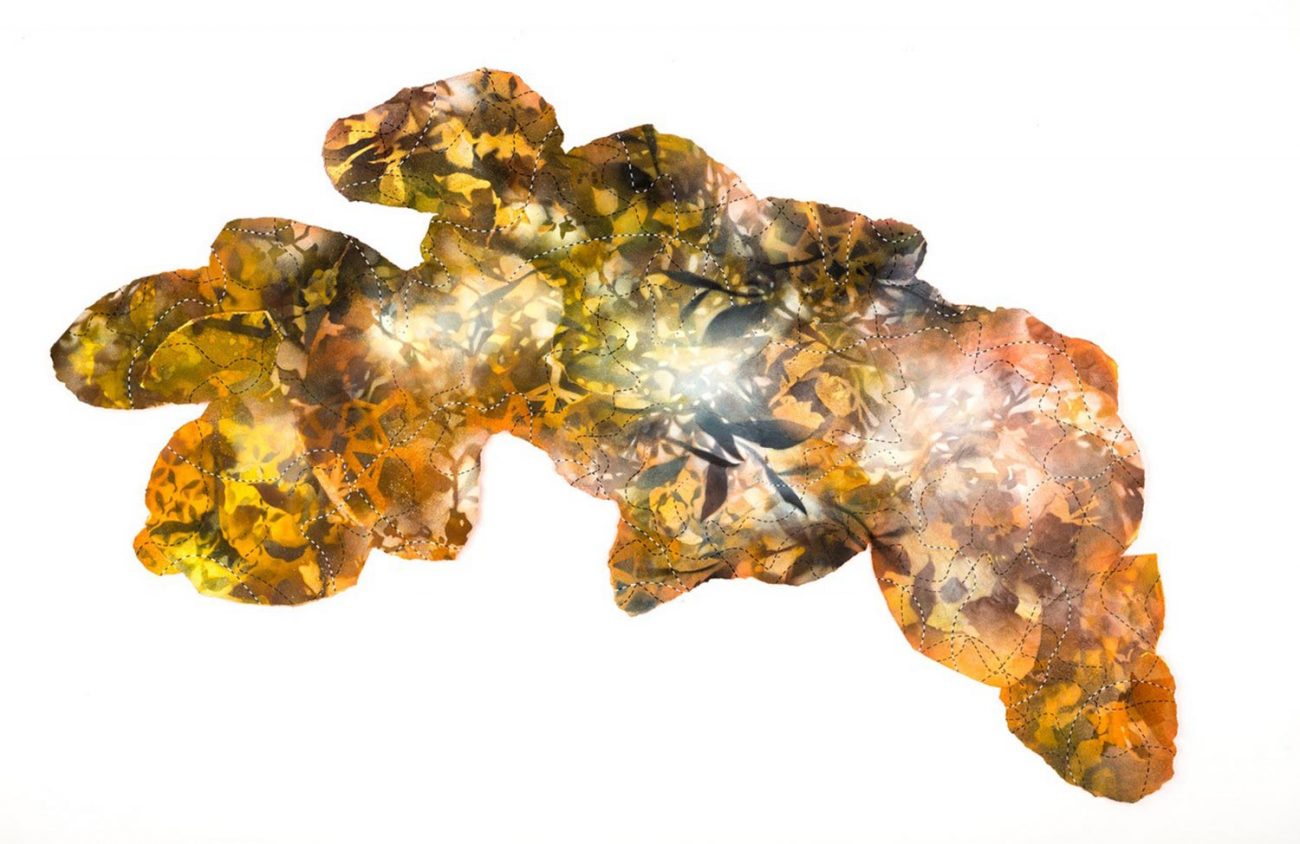Jim Tronson doesn’t fit today’s stereotype of the serious artist. When I asked how he defined “contemporary,” he answered, “Anything made after noon today.”
In addition to being a painter, he co-owns Tronson Gallery of Contemporary Art along with his wife, Tere. His own brightly colored abstract paintings were hanging in back the day I went to the gallery, but I was there to see the show in the front room, Educating Art: Lane Faculty.
I was a little self-conscious when I invited my mother-in-law along to the opening. Second Friday Art Walk in Springfield is a far cry from where she’s from — Santa Fe, New Mexico, which is the country’s third largest art market.
But I needn’t have been concerned. We were at the gallery a short while when she came up front to say, “He just turned them upside down,” referring to the fact Tronson switched the orientation of some of his paintings while we were there.
This is the first Lane Community College show at the gallery. Tronson hopes it’s the start of a long-term relationship. It’s usual practice for faculty shows to be held in spaces on campus, so how did this relationship start? A few art faculty visited the gallery, he said, and he saw some of their work and thought it “spectacular.”
One sticking point for me was the promotional material for the show emphasizes that the exhibiting artists all work as teachers and cites Kathleen Caprario, who teaches an art foundations class.
“Teaching, for us, is not ‘second place’ or something we do because we can’t make a living selling our handiwork or do something else,” Caprario says.
This is a strong statement, yet little in the show refers to education. I would have been interested to know, for instance, how long the artists had been teaching at LCC and how working as a teacher and as an artist are, if at all, connected. Once I stopped looking for connections to teaching a thread did emerge — an actual thread, a line painted, drawn or sewn was present in many of the artists’ work.
Caprario’s multimedia “memoryLOG2” features an all-over image resembling foliage. The image is flat as if it was painted with a template. Superimposed over it is a dashed line that moves across like a road on a map, flattening the image even further.
Caprario’s title offers a clue about the subject matter. Is this a picture of memory flattened and receding into the background with time? The most spectacular element of this large work is its shape, which is irregular and organic rather than geometric, reflecting the artist’s interest in how things — including humans — are shaped by their environment.
Jennifer Salzman’s black and white photographs of women carry with them a vintage feel. Salzman is interested in how expectations differ for women, compared to men, and a red thread sewn into the composition adds a contemporary feel.
Carrie O’Coyle’s small acrylic paintings are entirely abstract and all about the line. O’Coyle doesn’t impose a thread on top of an image. In her paintings the line loops and weaves around itself, and fills the entire format.
Faculty shows tend to be eclectic, and this one is no exception. It runs the spectrum from realism — particularly represented by Jan Halvorsen’s small portrait paintings — to abstract painting, multimedia work and sculpture.
My favorite pieces were three two-dimensional works by Robert Devine. I liked the depictions of clouds, sky and water. The map-like lines he drew, not dissimilar to Caprario’s piece, added a touch of whimsy.
Devine’s pieces work on various levels: as abstract art, as realistic representations of place and as playful, yet pointed, social commentary. Admittedly I did not get to the social commentary level until I spoke with the artist, who explained that the lines he drew over the clouds in Clouds of Witness represent the land masses that form the Bering Strait, with Russia on one side and Alaska on the other.
Devine thought the line defining Alaska’s border resembled Trump’s profile. The artwork is also a picture of the president with his attention turned toward Russia. So when Devine says edges or boundaries are constantly changing, it seems the artwork carries a hopeful message.
Educating Art: Lane Faculty is at Springfield’s Tronson Gallery Of Contemporary Art through Oct. 31.
